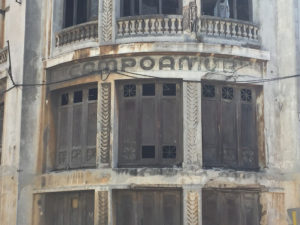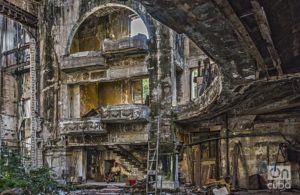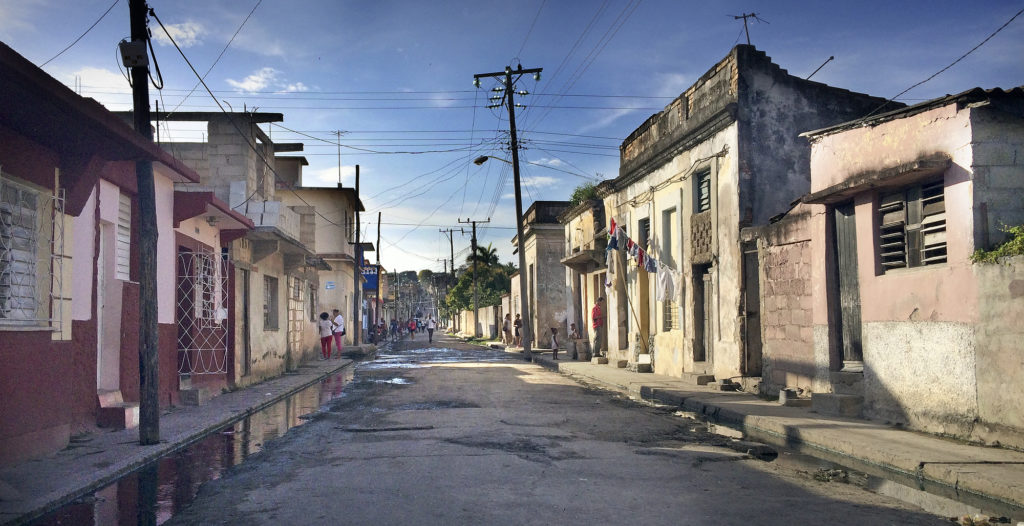A PRIDE AND HERITAGE OF CUBA THAT DESAPPEARS, THE “CAMPOAMOR THEATER”..
The beautiful Havana theater, symbol of the decades of 30 and 40, which gave so much music and joy to the Cubans, is sentenced.
The Capitol, National Monument, site of the Congress until 1958, is being repaired, more modest, just a few steps, the beautiful Havana ‘Teatro Campoamor’, is sentenced to death. A long death of half a century.
What he meant this beautiful theater in a horseshoe, paneling with golden fringes, and boxes with brass railings, which brings gave Havana society and the populace would cuddle the roost for whistle tenor operetta, which he had escaped “a cock”.
In Campoamor shone Rita Montaner, “The One”, Libertad Lamarque, Imperio Argentina, Lola Flores taconean y exhaltando lo españolísimo! live in the Campoamor.
In fashionable theater in Havana 30 and 40, Don Fernando Ortiz celebrated his Afro-Cuban evenings where, for the first time, were heard on stage bata drums Paul Roche in 1936. Ortiz sponsored That same year, in Campoamor , Festival of Poetry who led Juan Ramón Jiménez.
By Campoamor scene passed large Spanish companies and Cuban vaudeville with Angelita vedetes Castany, Whitey Amaro, and most sparkling vernacular theater. In zainetes music of Rodrigo Prats, Alicia unforgettable Brienguer Rico and the old man with contagious spark improvised sausages, attacking the politicians of the time.
Let’s see this ad I found in a magazine Lux of the time: More kittens “(United Artists carton):” Cine-evening August 15 at Campoamor 1. “2. Noticiero (Universal); 3 Nights of Fire (International Films). 1938 “. On your screen, Campoamor was in the news when President Roosevelt addressing civilized nations for the war proscribieran approaching barbarism. Message heard by fifty million people through thirteen hundred radio stations worldwide.
Campoamor projected in 1954, the film Hamlet, the most accomplished of English and film Roma, città aperta, excellent embodiment of Italian neorealism. Also many Mexican films and melodramas including the Argentine Tango idol Carlos Gardel.
The Campoamor combined with the buffs companies vaudeville skits and movies. Displayed two feature films in each function, one or two short shorts news and humor. It was customary for a dramatic-musical show, usually picaresque pieces with double meaning or political allusions remained on scene for a long time. As required by the guild of musicians and artists, the government required the owners of theaters rooms, offering movies along with live espectáculosen.
The criminalist famed Argentine Osvaldo Laudet at a conference at the Campoamor Theatre, said: “Living is a different thing to be” Judgment applicable to Teatro Campoamor that between beams, ceilings and walls in ruins, there are still living stones that tell secret stories love, passions, memories, nostalgia, sorrow, sighs, laughter, tears, hopes.
In the film New Art of Making Ruins, German Florian Borchmeyer, based on chronic writer Antonio José Ponte, the camera enters the ruins of Campoamor, where whatever the paneling stage lived, Reinaldo worker theater for eight years and that, homeless, like many Cubans lived among the ruins. Reinaldo’s love for memorable stones in the film Borchmeyer, tightens throats. Reinaldo died in a landslide, when the back wall of the stage, collapsed in 2012.
The Teatro Campoamor, in the vicinity of Havana Vieja – Heritage, for its history and architecture, is a heritage property.
The sledgehammer of the revolution will make it dust.
UN ORGULLO Y HERENCIA DE CUBA QUE DESAPARECE, EL TEATRO CAMPOAMOR.
El hermoso teatro habanero, símbolo de las decadas del 30 y 40, que tanta música y alegría, dio a los cubanos, está sentenciado
El Capitolio, Monumento Nacional, sede del Congreso de la República hasta 1958, está en reparación, más modesto, a solo unos pasos, el Teatro Campoamor, está condenado a muerte. Una larga muerte de medio siglo.
¿Qué significó este hermoso teatro en forma de herradura, artesonado con orlas doradas, y palcos con barandillas de bronce, donde se daba cita la sociedad habanera y el populacho se apelotonaba en el gallinero para chiflar al tenor de opereta, al que se le hubiera escapado “un gallo”.
En el Campoamor brillaron Rita Montaner, “La Única”, Libertad Lamarque, Imperio Argentina, Lola Flores ¡taconeando, exhaltando la bella y españolísima ¡Que viva el Campoamor¡
En teatro de moda en La Habana de los 30 y 40, Don Fernando Ortíz celebró sus veladas afrocubanas, donde, por primera vez, se escucharon en un escenario los tambores batá de Pablo Roche en 1936. Ese mismo año Ortiz auspició, en el Campoamor, el Festival de Poesía que dirigió Juan Ramón Jiménez.
Por la escena del Campoamor pasaron las grandes compañías de vodevil españolas y cubanas con las vedetes Angelita Castany, Blanquita Amaro, y lo más chispeante del teatro vernáculo. En zainetes con música de Rodrigo Prats, los inolvidables Alicia Rico y el viejito Brienguer, con chispa contagiosa, improvisaban morcillas, atacando a los políticos de la época.
Veamos este anuncio que encontré en una revista Lux de la época: “Cine-velada 15 de agosto en Campoamor: 1. “Más gatitos” (cartón de Artistas Unidos); 2. Noticiero (Universal); 3, Noches de Fuego (International Films). 1938”. En su pantalla, Campoamor mostró en un noticiero al Presidente Roosevelt dirigirse a las naciones civilizadas para que proscribieran la barbarie bélica que se aproximaba. Mensaje escuchado por cincuenta millones de personas a través de mil trescientas estaciones de radio del mundo.
Campoamor proyectó en 1954, el filme Hamlet, lo más logrado de la cinematografía inglesa y Roma, cittá aperta, excelente realización del neorrealismo italiano. También innumerables películas mexicanas y melodramas argentinos incluidos las del ídolo del tango Carlos Gardel.
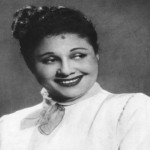
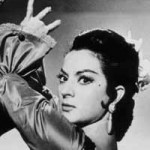

Rita Montaner, Lola Flores, Blanquita Amaro, Libertad Lamarque brillaron en el escenario del Campoamor.
El Campoamor combinaba los sainetes bufos con compañías de vodevil y películas. Exhibía dos largos metrajes en cada función, uno o dos cortos noticiosos y cortos de humor. Era costumbre que un espectáculo dramático-musical, por lo general piezas picarescas con doble sentido o alusiones políticas se mantuvieron por largo tiempo en escena. Por exigencia del gremio de músicos y artistas, el gobierno obligaba a los dueños de salas teatros, a ofrecer películas conjuntamente con espectáculosen vivo.
El afamado criminalista argentino Osvaldo Laudet en una conferencia en el Teatro Campoamor, expresó: “¡Vivir es una cosa diferente a existir!” Sentencia aplicable al Teatro Campoamor porque entre vigas, techos y paredes en ruinas, existen piedras aun vivas que cuentan historias secretas de amor, pasiones, recuerdos, nostalgias, penas, suspiros, risas, llanto, esperanzas.
En el filme Arte nuevo de hacer ruinas, del alemán Florian Borchmeyer, basado en la crónica del escritor Antonio José Ponte, la cámara entra a las ruinas del Campoamor, donde en lo que fuera el artesonado escenario vivió, Reinaldo, trabajador del teatro por ocho años, y que, sin casa, como tantos cubanos, vivió entre las ruinas. El amor de Reinaldo por las memorables piedras, en el filme de Borchmeyer, aprieta las gargantas. Reinaldo falleció en un derrumbe, cuando la pared del fondo del escenario, se desplomó en el 2012.
El Teatro Campoamor, en el entorno de La Habana Vieja – Patrimonio de la Humanidad– por su historia y arquitectura, es un inmueble patrimonial.
La mandarria de la revolución también lo convertirá en polvo.
Agencies/CubaNet/Reinaldo E.Cosano. La Habana/ Internet Photos/YouTube/Arnoldo Varona/TheCubanHistory.com
THE CUBAN HISTORY, HOLLYWOOD.




